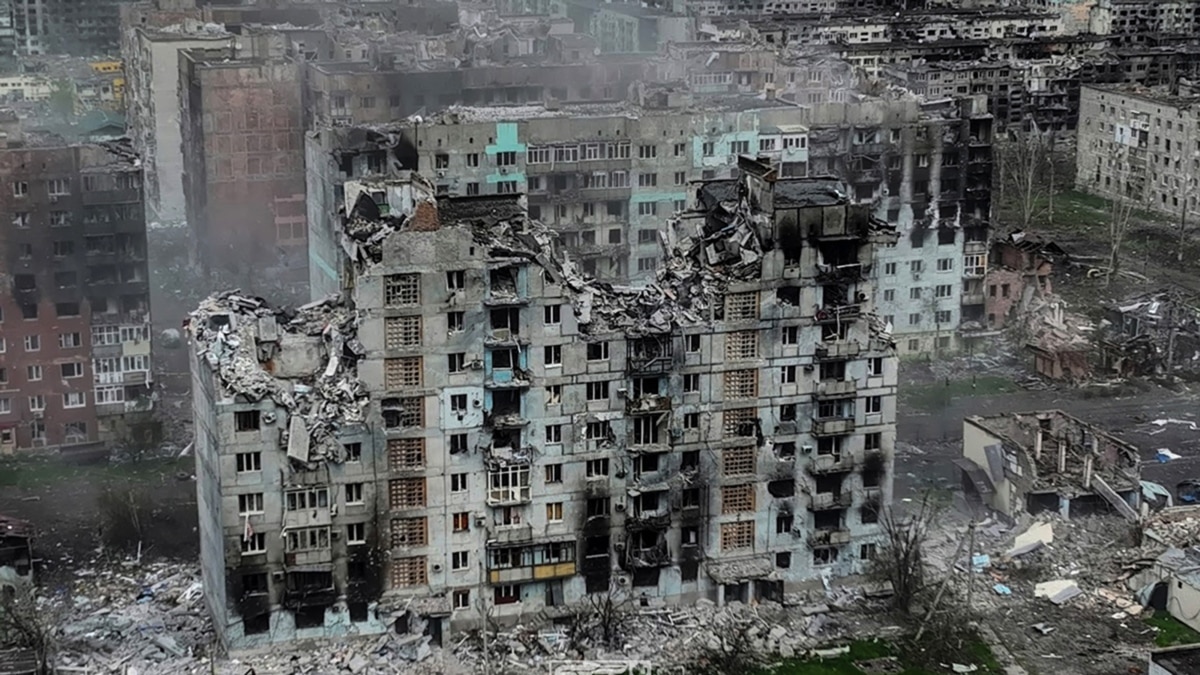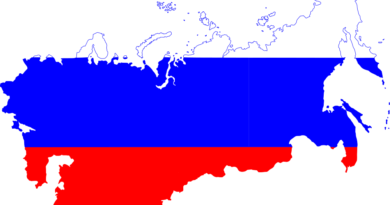Putin’s Four Lies After the Drone Attack on Moscow

Answering questions about the drone strike that same day, Russian President Vladimir Putin repeated his usual disinformation talking points about Ukraine and the West. Below are four of those falsehoods — debunked.
Claim #1
Putin began by scorning Ukraine’s sovereignty and accusing the West of creating Ukrainian hostility toward Russia:
“Basically, the territory that is called Ukraine was virtually controlled from the very beginning by people who, being led by the West, took the path of not just confronting Russia, but creating an ‘anti-Russia’ on that territory.”
That is false.
Since Ukraine became independent in 1991, its social, political and economic elites have been divided into pro-Western and pro-Russian camps.
That divide manifested itself most clearly in elections for Ukraine’s president, the post with the power to determine the country’s foreign policy and significantly influence its domestic policy.
During its 32 years of independence, Ukraine has been led by pro-Western presidents for 14 years — Viktor Yushchenko (2005-2010), Petro Poroshenko (2014-2019) and Volodymyr Zelenskyy (since 2019).
Ukrainian presidents who balanced between the West and Russia — Leonid Kravchuk (1991-1994) and Leonid Kuchma (1994-2005) — also governed for 14 years.
For four years, 2010-2014, Ukraine was led by pro-Russian President Viktor Yanukovych. In November 2013, he backed up from signing an association agreement with the European Union, leading to the Euromaidan protests in Kyiv.
Claim #2
Putin then claimed that NATO had promised Russia not to expand eastwards:
“Not only were we deceived and told that there would be no NATO expansion to the east, but then, they also reached Ukraine.”
That is also false. No such promise was made.
The Washington Treaty — or North Atlantic Treaty — that established NATO, was signed in 1949. It states that signatories “may, by unanimous agreement, invite any other European State in a position to further the principles of this Treaty and to contribute to the security of the North Atlantic area to accede to this Treaty.”
NATO has never changed that “Open Door Policy.”
The U.S., Europe and Russia have never signed any other treaty containing provisions for NATO membership.
Former Soviet President Mikhail Gorbachev confirmed in a 2014 interview with the Russian state website Russia Beyond that the West never promised the Soviet Union that NATO would not expand to the east:
“The topic of ‘NATO expansion’ was not discussed at all, and it wasn’t brought up in those years. I say this with full responsibility. Not a single Eastern European country raised the issue, not even after the Warsaw Pact ceased to exist in 1991. Western leaders didn’t bring it up, either.”
In 1997, then-U.S. President Bill Clinton refused to enter into a “gentlemen’s agreement” with Russian President Boris Yeltsin that “no former Soviet republics would enter NATO.”
Claim #3
Putin also accused Ukraine of starting the war in Donbas in 2014:
“Russia was forced to respond to the war the Ukrainian regime unleashed in Donbass. … the Kiev regime unleashed it in 2014 in Donbass.”
The war in Ukraine’s eastern Donbas region began in April 2014, when Russia clandestinely seized government buildings in response to which the Ukrainian military launched an operation against them.
In a March 2015 interview with Germany’s Der Spiegel magazine, Igor Girkin (alias Strelkov), a Russian intelligence operative who played a key role on the Russian side in the war in Donbas, claimed to have “convinced” Putin to unleash a war in eastern Ukraine.
“I was the one who pulled the trigger for war,” he said.
In that April 2014 interview, Strelkov said he was “joined by armed irregulars from Russia, [and] marched from Crimea to the provincial city of Sloviansk” in Donbas.
“In the beginning, nobody there wanted to fight,” said Strelkov, adding that his armed group attacked a police station in Slovyansk, initiating the first clashes with Ukrainian security forces.
Russia subsequently supplied arms, ammunition and financing to the illegal armed formations in Donbas. On June 13, 2014, the U.S. State Department confirmed that Russia had sent T-64 tanks, several BM-21 “Grad” multiple rocket launchers and other military vehicles” to eastern Ukraine.
Earlier this year in a January 25 ruling, the European Court of Human Rights recognized that Russia controlled the parts of Donbas seized by the so-called “separatists” in the spring of 2014:
“Among other things, the Court found that areas in eastern Ukraine in separatist hands were, from 11 May 2014 and up to at least 26 January 2022, under the jurisdiction of the Russian Federation.”
Claim #4
Putin claimed that Russia only strikes military facilities in Ukraine:
“We are striking at the territory of Ukraine, but with long-range precision weapons, at military infrastructure facilities only, either at ammunition or fuel and lubricants warehouses used for combat operations.”
That is also false.
The Russian army is destroying civilian infrastructure throughout Ukraine, including residential buildings, schools and hospitals. Since Russia launched its full-scale invasion of Ukraine on February 24, 2022, Russian military strikes have killed thousands of Ukrainian civilians.
On February 25, 2022, a day after Russia launched its invasion, Amnesty International’s Secretary General Agnes Callamard declared:
“The Russian military has shown a blatant disregard for civilian lives by using ballistic missiles and other explosive weapons with wide-area effects in densely populated areas. Some of these attacks may be war crimes.”
As of May 8, 2023, the Office of the U.N. High Commissioner for Human Rights recorded 23,606 civilian casualties in Ukraine. Of those, 8,791 of the victims were killed and 14,815 injured as a result “of the large-scale armed attack by the Russian Federation.”



